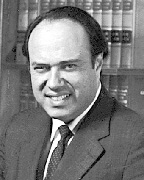In looking back over the last decade, I believe that one of the most important cases in the area of land use law involved the relocation of easements.
Prior to the decision of the Massachusetts Supreme Judicial Court in M.P.M. Builders, LLC v. Dwyer in 2004, the law in Massachusetts was that the location of an easement could not be changed without the consent of the holder of the easement.
In M.P.M. Builders, the Court adopted the rule in the Restatement of Property, namely that the owner of the servient estate "is entitled to make reasonable changes in the location or dimensions of an easement, at the servient owner's expense, to permit normal use or development of the servient estate, but only if the changes do not (a) significantly lessen the utility of the easement, (b) increase the burdens on the owner of the easement in its use and enjoyment, or (c) frustrate the purpose for which the easement was created."
The M.P.M. Builders case balances the need of the developer to use his land in a manner that optimizes its value with the right of the holder of the easement to benefit from the easement.
This change in the law allowed developers flexibility in moving easements that impeded development. It applies to easements held by public and private entities. The case is an important tool for developers in Massachusetts.
Saul Feldman, Esq. is a real estate attorney with the Law Offices of Feldman & Feldman, P.C., Boston, Mass.
Tags:









